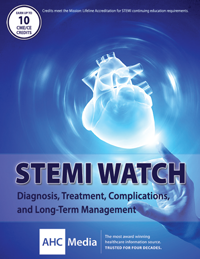Anatomical Screening for Heart Risk Better Motivator Than Functional Testing
November 18th, 2016
LOS ANGELES — One of the greatest challenges for physicians is inspiring patients with suspected coronary artery disease to embrace healthier lifestyle practices.
What turned out to be an especially good motivator might be surprising. An article in the Journal of the American Heart Association reports that undergoing a computed tomographic angiography (CTA), an anatomical screening, was a better spur than functional screenings — i.e., exercise ECG and stress test.
In fact, according to study authors led by UCLA researchers, a higher percentage of patients who underwent the CTA test ended up taking on healthier practices, such as adhering to preventive medications, eating healthier, and dropping a few pounds.
Noting that sparse information is available on why one or another cardiovascular screening leads to an improved lifestyle, the researchers sought to remedy that. To do so, they randomly assigned 10,003 patients — 53% female with a mean age of 61 — who were symptomatic for coronary artery disease to undergo a CTA or exercise ECG and stress tests.
Results indicate that, after 60 days, a higher proportion of those who had the CTA compared to those who underwent exercise ECG and stress testing, had adopted preventive measures such as improving medication adherence with the following:
- aspirin: 11.8% vs. 7.8%,
- statins: 12.7% vs. 6.2%, and
- Beta-blockers: 8.1% vs. 5.3%.
Patients in the CTA group were more likely to watch what they ate, and their rates of obesity or overweight status were lower compared with other the group.
On the other hand, healthier behaviors such as exercising, quitting smoking, or losing weight were not significantly affected by which test was used.
“Positive initial test results and revascularization are primary drivers of changes in preventive medical and lifestyle practices, with test type making secondary contributions,” study authors concluded. “However, substantial opportunities exist to further reduce cardiovascular risk.”

FEATURED RESOURCE



